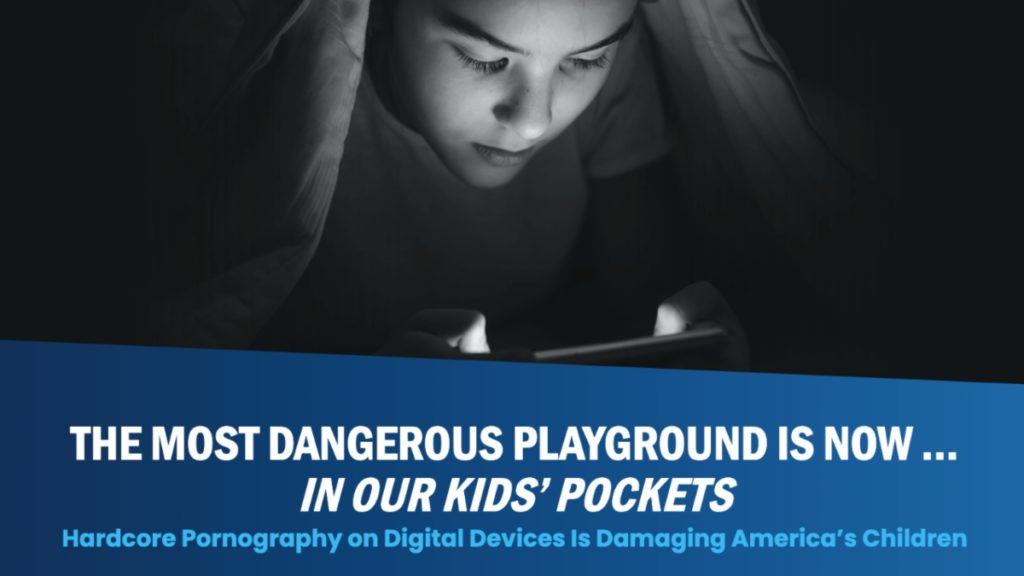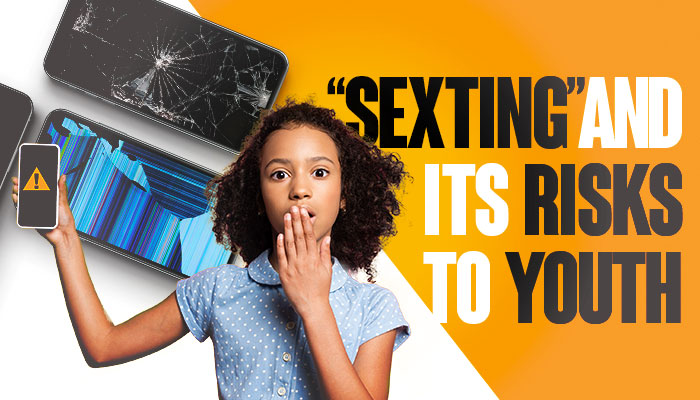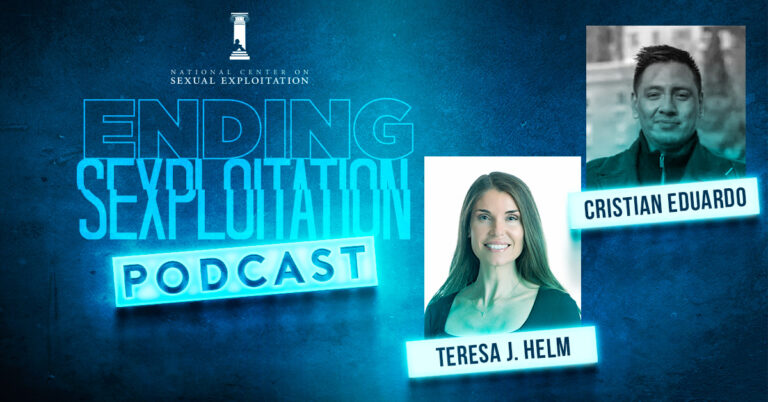Jay
In an increasingly digital world, the challenges faced by children and teens are evolving as rapidly as the technology they use. Recently, I encountered a heartrending example of just how intense and far-reaching these challenges can be. A father* reached out to me, desperate for help to remove child sexual abuse material (CSAM) —the more apt term for “child pornography”—of his 15-year-old, Jay*, and explain the harms of self-producing such content.
Jay was also wrestling with the raw reality of rejection and bullying as a transgender teen, yet, the turmoil Jay was experiencing offline proved to be just the tip of the iceberg.
In the parallel universe of the digital world, Jay was drawn into a dangerous sphere of predatory individuals on the social media platforms used by so many teens: Discord, Snapchat, Reddit, and Instagram. Through cunning enticement, adults on these platforms shared hardcore pornography and urged Jay to create and sell CSAM. Jay fell prey to their demands and shared sexually explicit images with predators. Now, sexual exploitation images of Jay have been widely distributed online. Jay’s father, at his wits’ end, was left wondering how to navigate this crisis.
Jay’s story is unfortunately not unique and underscores a pressing issue in our society—sexual exploitation and sextortion of vulnerable youth online. In this blog, we aim to shed light on this grim reality and offer tangible solutions for halting this onslaught of sexual exploitation that too many of our children face.
*Shared with permission by Jay’s father. Jay is a pseudonym used for protection of the teen.
Navigating the Digital World
In today’s digital age, young people are navigating a unique terrain of social interaction that many adults often struggle to fully comprehend. Adolescents are no longer merely using technology as a tool; it has become a pervasive part of their lives, acting as a platform for fundamental aspects of their growth and development. The process of forming identity, exploring personal interests, and building social networks —tasks once tackled in playgrounds, classrooms, or community centers—are are now mostly happening in the virtual realm. This is especially the case for LGBTQ youth, who often struggle to find acceptance and community in the offline world.
While the online world does provide legitimate benefits to adolescents, such as learning and community, it also brings an array of challenges and dangers like exposure to dangerous people and content. This has transformed the landscape of adolescence and highlights the need for adults to gain a deeper understanding of teen’s digital lives.
Grooming for Sex Trafficking
An analysis of U.S. sex trafficking cases active in 2020 found that the most common means by which sex traffickers accessed victims was the Internet, and that 65% of minor victims recruited via social media were recruited on Facebook, 14% on Instagram, and 8% via Snapchat.
A study of 270 homeless youth from three US cities showed that LGBTQ+ youth, and especially transgender youth, were disproportionately sex trafficked. Additionally, an online survey of 1,700 youth aged 13-20 found that they were also more likely than their non-LGBTQ+ peers to agree that adults grooming minors online is a common experience (91% vs. 82%).
Sextortion
Sextortion is the use of sexually explicit images to blackmail the person (or persons) depicted— to get more sexually explicit material, obtain money, coerce the person into in-person sex or sex trafficking, pressure the person to stay in a relationship, or any other benefit to the perpetrator. The sexual images may initially be shared consensually, may be obtained by theft (e.g., computer hacking), by alteration of nonsexual images of the person (i.e., forged pornography), or other means. Such practices are also used by adults to extort sexually explicit images from children, in which case the material constitutes CSAM.
Sextortion is a serious violation of a person’s rights, dignity, and safety, which often leaves victims feeling trapped and powerless, and constantly in fear that the images will be distributed or shared further.
The National Center for Missing & Exploited Children (NCMEC) has reported a disturbing uptick in sextortion cases. In 2023 alone, NCMEC received 26,718 reports of financial sextortion, up from 10,731 reports in 2022.
The threat to children, especially boys, is so great that the FBI issued a joint press statement in collaboration with other international law enforcement agencies, warning of what they call a “financial sextortion crisis,” and developed resources to help impacted children and families. The documentary Sextortion: The Hidden Pandemic also testifies to the extent of the problem and documents efforts by the Department of Homeland Security and Department of Justice to tackle sextortion cases.
The risk to LGBTQ youth is especially great. A 2023 Parents Together report surveying 1,000 parents found that LGBTQ+ youth were 2 – 3 times more likely to be asked for sexual images and acts on social media than their non-LGBTQ peers and they were 2 – 4 times more likely to send explicit images of themselves, making them especially vulnerable to sextortion.
Exposure to Hardcore Pornography
Another danger facing youth is exposure to hardcore pornography. A nationally representative sample of 14- to 18-year-olds reported that 84.4% of boys and 57% of girls have seen pornography.
Because LGBTQ+ youth can experience a lack of representation, they often turn to pornography in an attempt to learn about sex and/or their sexual identity. This is extremely dangerous because the violent, degrading content promoted on pornography sites is not a healthy place for anyone to learn about sex—least of all our most vulnerable and marginalized youth.
2023 research from Thorn found that LGBTQ+ youth are twice as likely to visit a pornography site as non-LGBTQ+ teens. Another 2022 study, which surveyed fifty-six 14- to 17-year-old bi+ males, found that 51% of bisexual male youth had watched pornography, believing it would teach them how to have same sex sexual interactions.
LGBTQ+ youth have been vocal about the way pornography has been damaging to them:
“… I think a big problem with the Internet is before I found valid, interesting medical information, I found porn … That’s just something that every elementary schooler stumbles upon… “
-agender, gay or lesbian, queer, and unsure/questioning, age 18
“The way that I found my gender identity was through really transphobic pornography. Once again, that’s played a role in my life. I wish that there had been a different route there … I just had such the wrong idea of what it was and what sh*t meant.”
-agender, gay or lesbian, queer, and unsure/questioning, age 18
Myth-Busting: Sexting and Pornography is NOT Beneficial to LGBTQ+ Youth
A misguided narrative asserts that sexting and/or viewing pornography is somehow beneficial or even necessary for LGBTQ+ youth as they explore their sexual identities.
It is severely problematic that pornography has become the primary learning tool for queer and questioning youth. Pornography depicts sex and human intimacy in unrealistic and derogatory ways. Torture, extreme violence, and power imbalances cannot be acceptable learning materials. There is little to no mutuality, respect, or consent in pornography.
The argument that LGBTQ+ youth need access to pornography is often an excuse Big Tech gives us for not providing greater protective measures to prevent teens from sending and/or receiving sexually explicit content—actions that can alter a young person’s life in seconds. Big Tech also uses this excuse to avoid proactively filtering pornography sites for teen devices or apps.
This line of reasoning is not only flawed but downright dangerous. It disregards the extensive evidence of great risk (not to mention illegality) of teens creating and/or sharing their own child sex abuse material or receiving sexually explicit content from other teens and even adults. It also dismisses the scientifically proven harms of pornography, such as the promotion of unrealistic sexual expectations, increased risk of experiencing sexual exploitation, increased risk of becoming sexually aggressive, the development of sexual dysfunctions, and so much more. Learn more by clicking on the pictures below.
It is abhorrent that Big Tech uses false arguments claiming to care for LGBTQ youth, when in fact they are clearly concerned about profit.
It’s vital to make clear that exploration of sexuality and identity does not necessitate sexting and exposure to pornography. On the contrary, such exposure does serious harm and any corporation or entity furthering a narrative that it is acceptable or even necessary is directly putting youth in grave danger. It leads to confusion, distress, and susceptibility to online predators.
Instead of accepting this misguided narrative, we must focus on providing LGBTQ+ youth with accurate and healthy portrayals of human connection, supportive counseling, and positive role models.
The Intersection of Transgender Youth and Online Pressures
Youth, in their quest to fit in and be accepted, often grapple with external pressures: peer acceptance, societal standards, and the constant need to be “liked” online. Additionally, there are the internal pressures of adolescence—self-esteem issues, body image concerns, and the desire to explore their sexuality. It’s this volatile mix of pressures hat can make young people vulnerable to online exploitation.
For transgender youth like Jay, these pressures are compounded by additional challenges. They may grapple with finding acceptance for their identity, struggle with feelings of isolation, or fear prejudice and discrimination. Such vulnerabilities can make transgender youth more susceptible to online predators.
Case Study: Jay’s Story
Jay’s story is a clear illustration of how these elements converge. Feeling rejected by some family and bullied relentlessly by peers, Jay sought acceptance and affirmation online. The predators Jay encountered on Reddit and Discord, recognizing vulnerability, enticed Jay into creating and selling explicit content. There is now CSAM of Jay being traded online. This will never stop. Jay is likely to face trauma from this experience for years into the future. Mainstream platforms did nothing to stop adults from engaging with this vulnerable teen, they did nothing to stop the exchange of hardcore pornography and CSAM, nor did they use any of the many tools at their fingertips to detect the clear signs of predatory grooming.
How to Protect and Support Trans Youth
To safeguard our young people from such risks, among other social supports, they direly need comprehensive education about online safety, open conversations about digital pressures, discussions about healthy intimacy, and mechanisms to report online exploitation.
However, no amount of education for young people will get at a critical solution needed here. There’s an urgent need for accountability from the tech platforms where this abuse runs rampant. These companies—Apple, Discord, Meta, Snapchat, Reddit, and others—have a moral and social responsibility to prioritize child protection and safety from the outset. Safety considerations shouldn’t be an afterthought —they must be the foremost consideration during the design and development phases of digital products and services.
Unfortunately, the current reality is far from this ideal. Tech companies prioritize profits and high user engagement over the safety of their younger users. This lack of emphasis on safety has contributed significantly to the surge in online sexual exploitation of children and teens.
These companies are even using LGBTQ+ youth as an excuse to NOT put safety measures in place. LGBTQ+ youth experiences must not be used as a license for Big Tech to avoid putting common sense safety features in place!
The Kids Online Safety Act (KOSA) and the EARN IT Act are two legislative proposals that aim to hold tech companies accountable for child exploitation happening on their platforms.
The Kids Online Safety Act (KOSA) proposes to establish minimum standards for age-appropriate design, strengthened parental controls, and regular reporting of harmful algorithms that amplify harmful content to children. On the other hand, the EARN IT Act (Eliminating Abusive and Rampant Neglect of Interactive Technologies Act) would remove the blanket liability protections currently enjoyed by tech companies unless they adopt specific best practices to combat child sexual exploitation.
Both of these proposed laws with overwhelming bi-partisan support reflect an understanding of the significant role tech companies play in either fueling or preventing online child exploitation. By holding these companies accountable, we can make great strides in protecting young people like Jay, and countless others, from the growing threat of online sexual exploitation.
Please take action below, calling for your legislators to support KOSA and EARN IT!
Protecting Transgender Youth from Online Exploitation: A Call to Action
Transgender youth like Jay are navigating a complex and unfriendly digital landscape, a terrain that often becomes treacherous when marred by exploitation and sextortion. Their quest for acceptance and understanding makes them a target for online predators, a situation exacerbated by the indifference of tech giants. As we’ve seen, when online platforms prioritize profits and user engagement over the safety of their users, these vulnerable youth pay an unacceptable price.
It is time for tech companies to step up and take decisive action to protect these young individuals. The implementation of stringent safety measures, adherence to age-appropriate design, and prioritization of child protection during the design and development phase are not just ethically right but crucial for the well-being of our youth. Let us remember that the health and safety of our young people, particularly our transgender youth, should never be compromised. It is our collective responsibility to protect them from the darker corners of the digital world.




